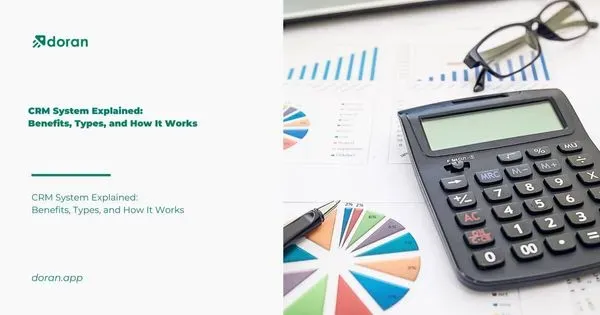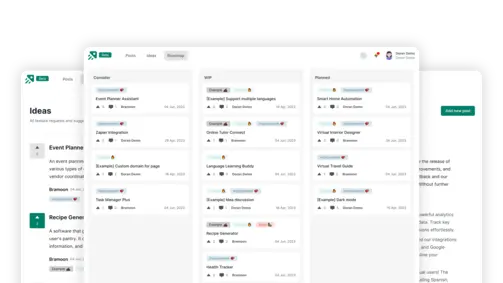9 Key SaaS Metrics to Maximize Your SaaS Performance
Create changelog and product roadmap for your product
Explore nowTable of contents 13 min
- Activation Rate
- Conversion Rate
- Number of Active Users (NAU)
- Monthly Recurring Revenue (MRR)/ Annual Recurring Revenue (ARR)
- Expansion Revenue
- Customer Acquisition Cost (CAC)
- Customer Lifetime Value (CLV or LTV)
- Average Revenue Per Account (ARPA)
- Activation Rate
- Conversion Rate
- Number of Active Users (NAU)
- Monthly Recurring Revenue (MRR)/ Annual Recurring Revenue (ARR)
- Expansion Revenue
- Customer Acquisition Cost (CAC)
- Customer Lifetime Value (CLV or LTV)
- Average Revenue Per Account (ARPA)
In today’s competitive SaaS landscape, understanding and monitoring key SaaS metrics is essential for optimizing your SaaS performance. By tracking these metrics, you can gain valuable insights into your business’s growth, customer engagement, and overall success.
Activation Rate
Formula
Activation = number of users that your critical event has successfully reached/ total number of users
Its Importance
Activation rate is the most significant among the key SaaS metrics, especially in the product-led model, in which the in-app user experience plays a vital role as a force driver for improvement.
There is a term called “aha moment,” in which the customers first recognize how valuable your product is to their current lifestyle. This moment is not the same for all products. Companies should go through the process such as creating customer journey maps, conducting user interviews, and behavior analytics to dive deep into which product features can ensure long-term success and retention.
Companies should never underestimate the “aha moment,” as this is the key to reducing users’ time to consider, activate, and start engaging with your products more closely.
Find out more: The Importance of customer feedback to SaaS Founders
Conversion Rate
Formula
Conversion rate = total number of users on a trial that agreed to register for paid subscription/ total number of users on a trial
Its Importance

The conversion rate shows how many users on trial, also known as freemium, agreed to spend money on your services. When users discover how valuable your product is to their life and that it is easy to use, the conversion rate will be high. The high conversion rate is equal to the fact that your onboarding plans effectively direct users through signing up.
As conversion rate is among one of the most critical KPIs for SaaS businesses, companies should take a closer look to find out the underlying reasons for this problem if the conversion rate is not performing well. Try optimizing the onboarding process and digging into the users’ behavior data to identify where the point is that users tend to give up on your product. An improvement in your conversion rate, even low, may lead to astonishingly better revenue over time.
Number of Active Users (NAU)
Formula
NAU = number of daily users + number of returning users
Its Importance
This is one of the key SaaS metrics that companies should never lose sight of. NAU is used to calculate how many people are regularly using your app. Customers who use your app consistently are more likely to stay longer. This type of customer also has more potential for upselling than those who log into your app once in a while. Making a quick comparison between the number of subscribers against the number of active users will give you insights into how many users are not in the habit of using your products. These users are prone to churning, and they require re-engagement efforts to take them back to the platform.
Monthly Recurring Revenue (MRR)/ Annual Recurring Revenue (ARR)
Formula
ARR = 12 x MRR
Its Importance
MRR stands for Monthly Recurring Revenue, and ARR is for Annual Recurring Revenue. Both metrics are the key SaaS metrics. MRR is the total revenue your company can gain from customers in a month; multiplying it by 12, you get the ARR.
Instead of receiving once-and-for-all revenue from customers, recurring revenue is what makes the SaaS model more attractive than the others. As long as your customers continue with the subscription to your services, you can receive monthly revenue from them.

SaaS companies should be able to charge their offerings according to their value, as the price of some companies is enough to sustain the business.
Read more: How to Collect Customer Feedback Effectively
Expansion Revenue
Formula
Expansion revenue = Total MRR from upselling and cross-selling
Its Importance
Expansion revenue is one of the SaaS performance metrics that is used to offset the effects of churn.
It requires less money to upsell customers into more advanced versions of your offerings than it does to recruit new customers. The cost of gaining greater expansion revenue is three times cheaper than that of acquiring new users.
If the strategy of the SaaS companies is mainly focusing on new recruitment of customers, there should be a change in prioritizing the expansion revenue for a more exponential impact on growth. A report from ProfitWell recommends that at least 30% of your revenue should come from expansions.
Customer Acquisition Cost (CAC)
Formula
CAC = Total money for sales and marketing over a period/ number of customers acquired during that period
Its Importance
CAC, or Customer acquisition cost, is among the key SaaS metrics companies should never look down on. CAC calculates the amount of money that your SaaS businesses have spent on sales, marketing, and on other methods of recruiting new customers.
Companies should be patient and understand that this metric can not always be positive initially, as it may take months or even years to get back the money.
SaaS companies can only be healthy and sustainable if they can recover CAC within 12 months. Otherwise, the burden of the cost may drag the companies down.
Customer Lifetime Value (CLV or LTV)
Formula
CLV = (Customer revenue x customer lifetime) - the cost of acquisition and maintenance
Its Importance
Customer lifetime value calculates the total revenue companies can gain from customers over their account lifetime.

Customer lifetime value ranks among one of the key SaaS metrics as it helps companies estimate the value of customers for the businesses over time. This metric will be the foundation for the SaaS company’s long-term goals and also customer engagement strategies.
Average Revenue Per Account (ARPA)
Formula
ARPA = MRR/ total number of the active subscription
Its Importance
The average revenue per account enables companies to look deeper into individual cohorts of users to gain better insights into the value of each segment. In the scenario that your businesses have witnessed the overall revenue, but you are not sure if the money comes from the increase in the number of users or you have successfully boosted the average revenue account over time, try comparing the current ARPA rate to the past data to figure out the source of growth. If your latest ARPA rate is higher than the previous data, you can proudly state that your average account is more valuable than it was.
Churn Rate
Formula
Churn rate = (number of churned customers in a period/ total number of customers to start in a period) x 100
Its Importance
Churn rate is also one of the key SaaS metrics that companies should take into consideration. There are two most popular churn rates: customer churn rate and revenue churn rate. Customer churn rate measures the number of users or accounts that stop using your offerings each month. The revenue churn rate is the amount of lost money, illustrated as a percentage of overall revenue.
Churn rate tracking may not be very important for SaaS start-ups, but when the companies have reached the growth stage, making the churn rate the lowest point may be the priority of most companies.
In today’s competitive SaaS landscape, understanding and monitoring key SaaS metrics is essential for optimizing your SaaS performance. By tracking these metrics, you can gain valuable insights into your business’s growth, customer engagement, and overall success.
Activation Rate
Formula
Activation = number of users that your critical event has successfully reached/ total number of users
Its Importance
Activation rate is the most significant among the key SaaS metrics, especially in the product-led model, in which the in-app user experience plays a vital role as a force driver for improvement.
There is a term called “aha moment,” in which the customers first recognize how valuable your product is to their current lifestyle. This moment is not the same for all products. Companies should go through the process such as creating customer journey maps, conducting user interviews, and behavior analytics to dive deep into which product features can ensure long-term success and retention.
Companies should never underestimate the “aha moment,” as this is the key to reducing users’ time to consider, activate, and start engaging with your products more closely.
Find out more: The Importance of customer feedback to SaaS Founders
Conversion Rate
Formula
Conversion rate = total number of users on a trial that agreed to register for paid subscription/ total number of users on a trial
Its Importance

The conversion rate shows how many users on trial, also known as freemium, agreed to spend money on your services. When users discover how valuable your product is to their life and that it is easy to use, the conversion rate will be high. The high conversion rate is equal to the fact that your onboarding plans effectively direct users through signing up.
As conversion rate is among one of the most critical KPIs for SaaS businesses, companies should take a closer look to find out the underlying reasons for this problem if the conversion rate is not performing well. Try optimizing the onboarding process and digging into the users’ behavior data to identify where the point is that users tend to give up on your product. An improvement in your conversion rate, even low, may lead to astonishingly better revenue over time.
Number of Active Users (NAU)
Formula
NAU = number of daily users + number of returning users
Its Importance
This is one of the key SaaS metrics that companies should never lose sight of. NAU is used to calculate how many people are regularly using your app. Customers who use your app consistently are more likely to stay longer. This type of customer also has more potential for upselling than those who log into your app once in a while. Making a quick comparison between the number of subscribers against the number of active users will give you insights into how many users are not in the habit of using your products. These users are prone to churning, and they require re-engagement efforts to take them back to the platform.
Monthly Recurring Revenue (MRR)/ Annual Recurring Revenue (ARR)
Formula
ARR = 12 x MRR
Its Importance
MRR stands for Monthly Recurring Revenue, and ARR is for Annual Recurring Revenue. Both metrics are the key SaaS metrics. MRR is the total revenue your company can gain from customers in a month; multiplying it by 12, you get the ARR.
Instead of receiving once-and-for-all revenue from customers, recurring revenue is what makes the SaaS model more attractive than the others. As long as your customers continue with the subscription to your services, you can receive monthly revenue from them.

SaaS companies should be able to charge their offerings according to their value, as the price of some companies is enough to sustain the business.
Read more: How to Collect Customer Feedback Effectively
Expansion Revenue
Formula
Expansion revenue = Total MRR from upselling and cross-selling
Its Importance
Expansion revenue is one of the SaaS performance metrics that is used to offset the effects of churn.
It requires less money to upsell customers into more advanced versions of your offerings than it does to recruit new customers. The cost of gaining greater expansion revenue is three times cheaper than that of acquiring new users.
If the strategy of the SaaS companies is mainly focusing on new recruitment of customers, there should be a change in prioritizing the expansion revenue for a more exponential impact on growth. A report from ProfitWell recommends that at least 30% of your revenue should come from expansions.
Customer Acquisition Cost (CAC)
Formula
CAC = Total money for sales and marketing over a period/ number of customers acquired during that period
Its Importance
CAC, or Customer acquisition cost, is among the key SaaS metrics companies should never look down on. CAC calculates the amount of money that your SaaS businesses have spent on sales, marketing, and on other methods of recruiting new customers.
Companies should be patient and understand that this metric can not always be positive initially, as it may take months or even years to get back the money.
SaaS companies can only be healthy and sustainable if they can recover CAC within 12 months. Otherwise, the burden of the cost may drag the companies down.
Customer Lifetime Value (CLV or LTV)
Formula
CLV = (Customer revenue x customer lifetime) - the cost of acquisition and maintenance
Its Importance
Customer lifetime value calculates the total revenue companies can gain from customers over their account lifetime.

Customer lifetime value ranks among one of the key SaaS metrics as it helps companies estimate the value of customers for the businesses over time. This metric will be the foundation for the SaaS company’s long-term goals and also customer engagement strategies.
Average Revenue Per Account (ARPA)
Formula
ARPA = MRR/ total number of the active subscription
Its Importance
The average revenue per account enables companies to look deeper into individual cohorts of users to gain better insights into the value of each segment. In the scenario that your businesses have witnessed the overall revenue, but you are not sure if the money comes from the increase in the number of users or you have successfully boosted the average revenue account over time, try comparing the current ARPA rate to the past data to figure out the source of growth. If your latest ARPA rate is higher than the previous data, you can proudly state that your average account is more valuable than it was.
Churn Rate
Formula
Churn rate = (number of churned customers in a period/ total number of customers to start in a period) x 100
Its Importance
Churn rate is also one of the key SaaS metrics that companies should take into consideration. There are two most popular churn rates: customer churn rate and revenue churn rate. Customer churn rate measures the number of users or accounts that stop using your offerings each month. The revenue churn rate is the amount of lost money, illustrated as a percentage of overall revenue.
Churn rate tracking may not be very important for SaaS start-ups, but when the companies have reached the growth stage, making the churn rate the lowest point may be the priority of most companies.
Effectively tracking and analyzing key SaaS metrics empowers you to make data-driven decisions that enhance your SaaS performance. By monitoring key metrics such as monthly recurring revenue, customer acquisition cost, churn rate, and customer lifetime value, you can identify growth opportunities, optimize your marketing and sales strategies, and ensure customer satisfaction.
What to not miss out on our blog
Gain insightful knowledge and invaluable experiences from dedicated experts.

CRM System Explained: Benefits, Types, and How It Works
Discover everything about CRM system. Learn the benefits and how a CRM system works to improve customer relationships and streamline business operations.

Are you ready? Start your free trial today.
Enhance communication, keep track of the progress, understand customers' insight and more by taking your first trial on Doran.
Sign up for free

